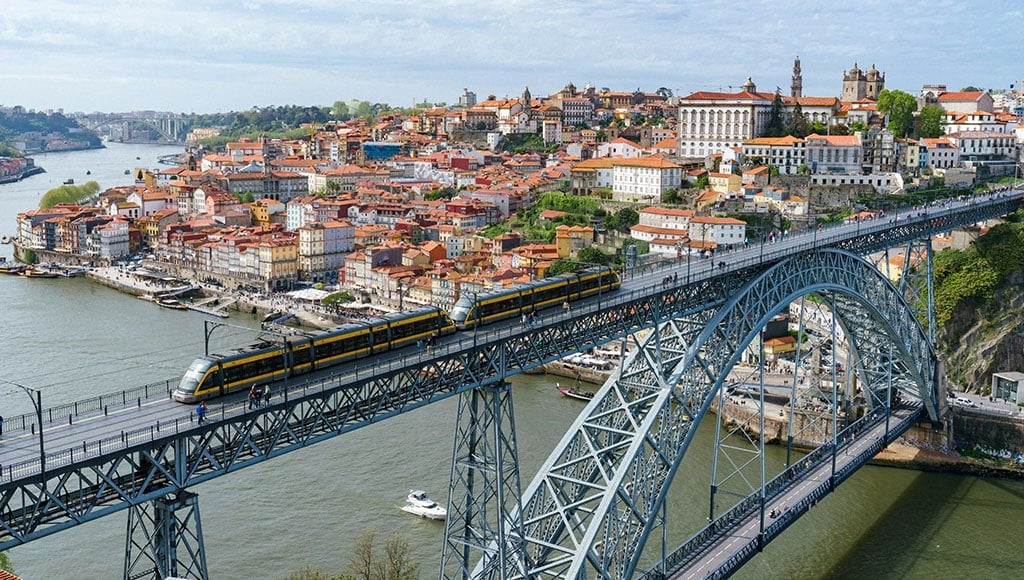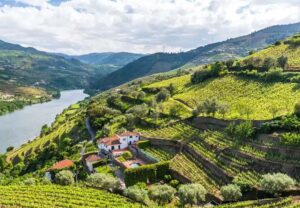As someone born in England and having recently spent considerable time in both Porto and France, I find it only fitting to write this month about the rich history of Port wine – a drink whose rise to fame is deeply connected to the three countries.
Port wine, known in Portugal as “Vinho do Porto”, originates from the rugged and wild hillsides of the upper Douro Valley, a remote and breathtaking region approximately 80 kilometres inland from the coastal city of Porto.
This alcoholic beverage, made from grapes grown in the Douro and aged in the cellars of Vila Nova de Gaia, became known as “Port wine” during the second half of the 17th century. The wine had to be transported down the river by boat to Porto before being shipped across the Atlantic, hence getting its name from the city from which it was exported.
While the wine itself is distinctly Portuguese, its rise to international prominence is deeply tied to England. In the 17th century, a series of conflicts between England and France led to a significant disruption in the trade of French wines to England. These two powerful nations were frequently at odds, driven by both territorial ambitions and religious differences, which led England to impose trade embargoes and heavy tariffs on French goods. This was part of a broader strategy to weaken France’s economic power and reduce its influence in Europe.
For English wine drinkers, this posed a particular problem. France had long been the primary supplier of wine to England, particularly the wines from Bordeaux, which were highly prized by the English aristocracy. With the import of French wines severely restricted, English merchants were forced to look elsewhere for their wine supplies.
Portugal emerged as a natural alternative for the English. The two nations had enjoyed a strong diplomatic relationship since the Treaty of Windsor in 1386, one of the oldest alliances in the world, which had established a long-standing friendship between the two countries. Under the terms of the treaty, English woollen goods were given preferential treatment in Portugal, while Portuguese wines received favourable tariffs in England.
With French wines no longer available, English merchants turned to the wines of the Douro Valley in northern Portugal. These wines were robust and flavourful, but they needed to be fortified with brandy to ensure they could survive the long sea voyage back to England without spoiling. This fortification process not only preserved the wine but also enhanced its sweetness and strength – which is said to have been the birth of Port. However, sailors most likely also adopted this method during the Age of Discovery to preserve the wine during their long sea voyages.
The English investment in the Douro Valley had a transformative effect on the region. It not only boosted the local economy but also helped to establish Port wine as one of Portugal’s most important exports. By the 18th century, Port had become deeply embedded in English culture, with the wine being a staple at aristocratic dinners and a key element of British gentlemanly tradition.

The success of the Port wine trade also led to further developments in the Douro Valley, including the demarcation of the region in 1756 by the Marquis of Pombal, whose role was crucial in rebuilding the city of Lisbon after a catastrophic earthquake the previous year, making it one of the world’s first officially recognized wine regions. This regulation was intended to protect the quality and reputation of Port wine, ensuring that people continued to receive the finest product possible.
In modern times, Port wine has maintained its status as a luxury product, enjoyed by connoisseurs and casual drinkers alike. The Douro Valley, with its steep terraces and dramatic landscapes, was designated a UNESCO World Heritage site in 2001, recognising both its cultural significance and its role in the production of Port wine. Today, the region is a popular destination for wine tourism, where visitors can explore the historic “quintas”, or wine estates, learn about the winemaking process, and, of course, the best part of all, sample the different styles of Port.
As I sip my next glass, I’ll be sure to remember that I am partaking in a centuries-old tradition, one that has traversed borders, endured wars, and celebrated peace, embodying the very essence of what it means to be a product of the world.
|| features@portugalresident.com
Jay works for a private charter airline, and is also a UX designer and aspiring author who enjoys learning about history and other cultures


























